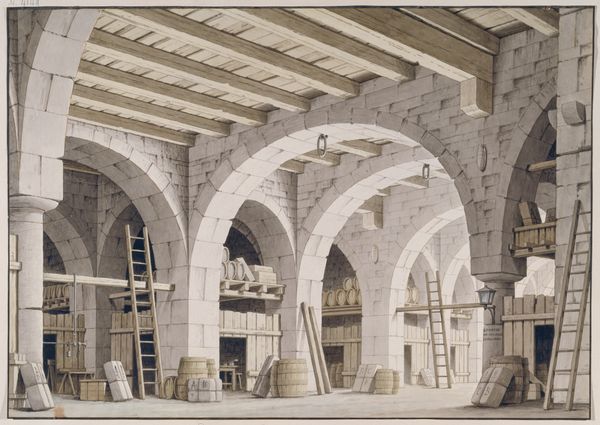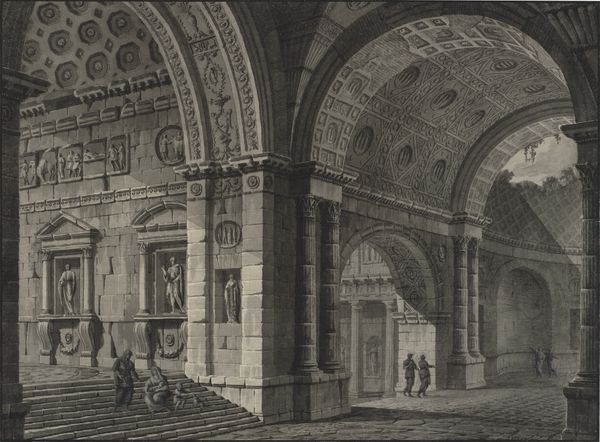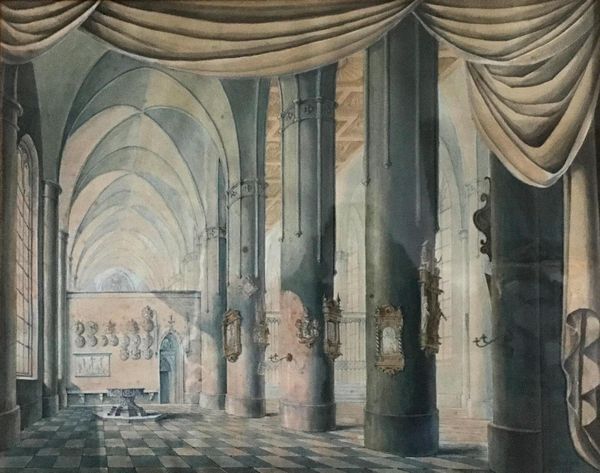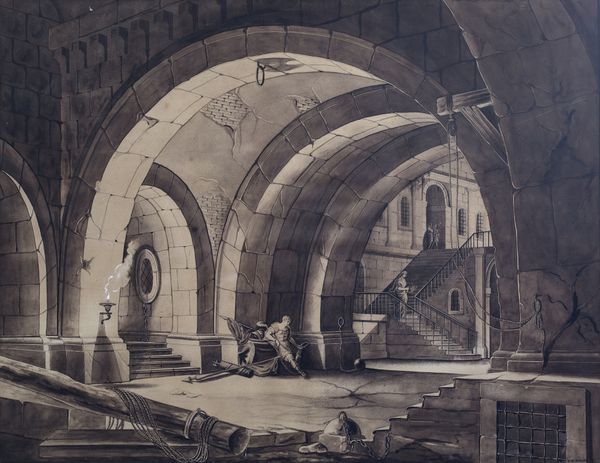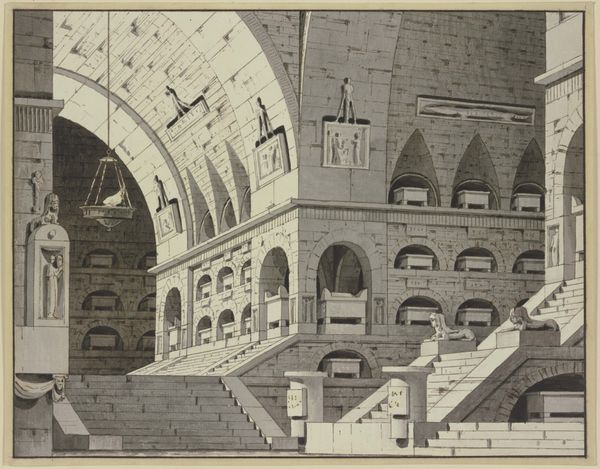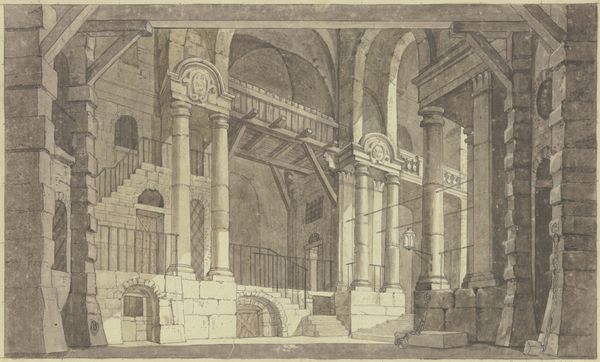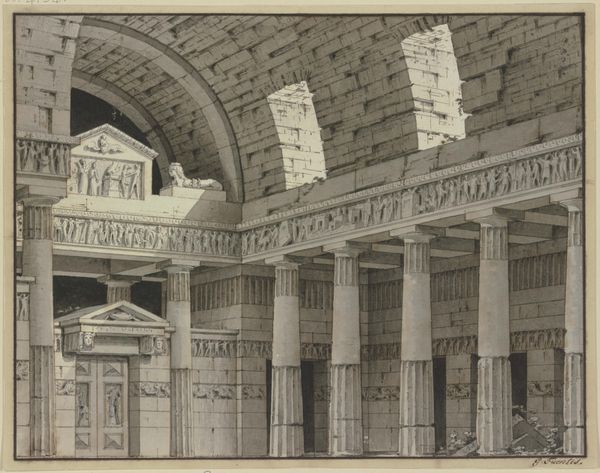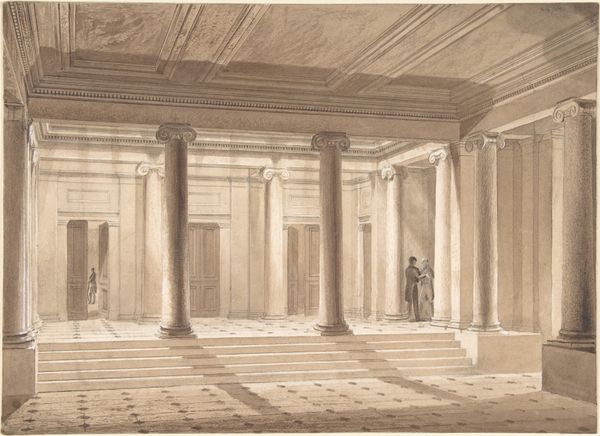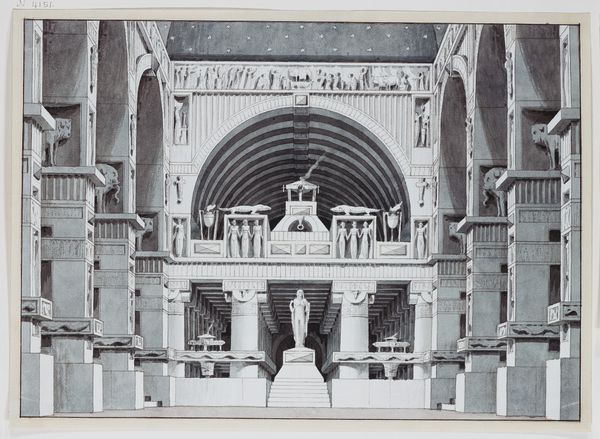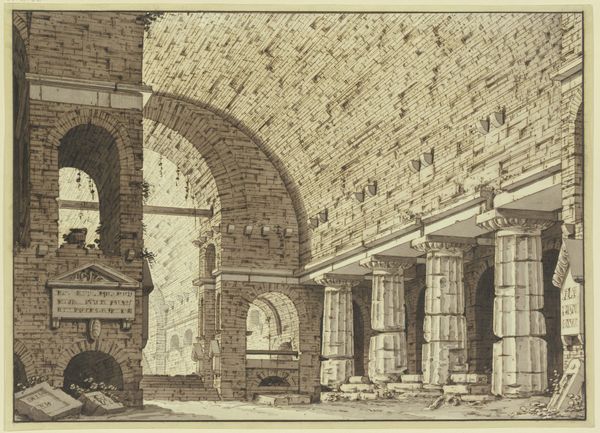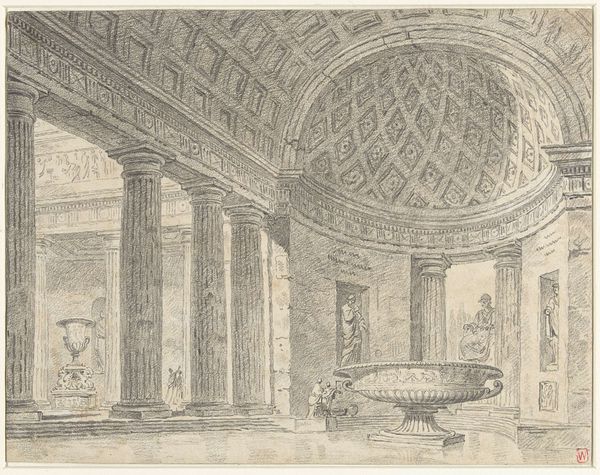
drawing, print, paper, ink, chalk, graphite, architecture
#
drawing
#
neoclacissism
# print
#
landscape
#
paper
#
historic architecture
#
form
#
ink
#
chalk
#
graphite
#
architecture
Dimensions: 343 × 470 mm
Copyright: Public Domain
Editor: This is Pietro di Gottardo Gonzaga's "Subterranean Mausoleum," a drawing made between 1780 and 1790 using ink, graphite, and chalk on paper. The perspective is striking; it feels both grand and oppressive at the same time. What symbolic readings do you draw from this landscape? Curator: Notice how Gonzaga uses classical architectural elements: arches, coffered ceilings, rows of statuary. These weren’t merely aesthetic choices. The late 18th century was consumed with rediscovering and reinterpreting antiquity. It's about claiming a lineage, a symbolic connection to the power and order of the Roman Empire. Does the setting, deep underground, suggest something else to you? Editor: Well, a mausoleum, by definition, deals with death and remembrance, but placing it underground makes it feel even more secretive, almost hidden. Curator: Precisely. Think about what cultural associations are triggered by underground spaces. Myths of the underworld? Concealed knowledge? The drawing acts as a stage where the architecture isn’t simply a backdrop, but a psychological landscape reflecting deep-seated cultural anxieties and aspirations. The severe perspective emphasizes this dramatic tension. It also might suggest that even great civilizations fade from view into memory. Editor: So the choice of the mausoleum itself, along with its placement, highlights the inevitable decline that even empires face, using these visual symbols? Curator: Indeed. It invites us to reflect on our own fleeting moment in history, the symbolic weight of the past, and the inevitability of its decay, all through the careful selection of classical forms and subterranean space. Editor: That’s given me a whole new appreciation for how loaded even seemingly simple architectural drawings can be.
Comments
No comments
Be the first to comment and join the conversation on the ultimate creative platform.
